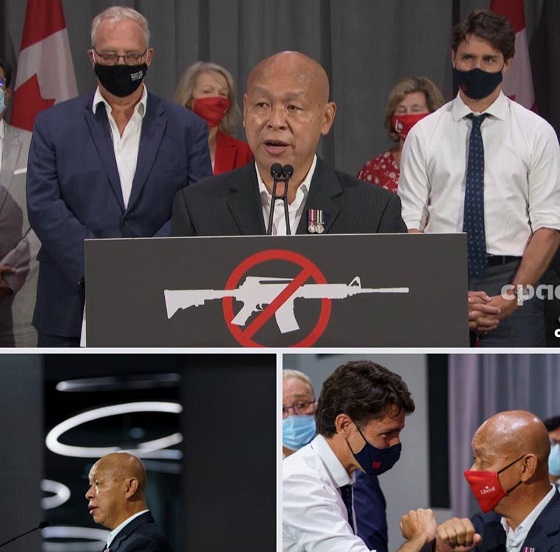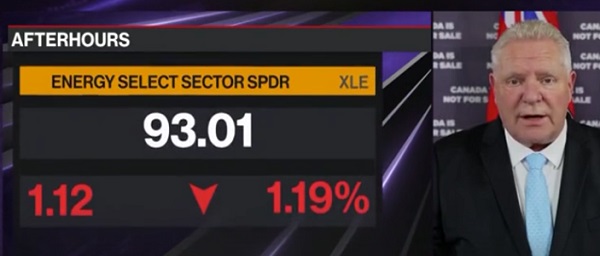COVID-19
The Media Wants a Return to 2020
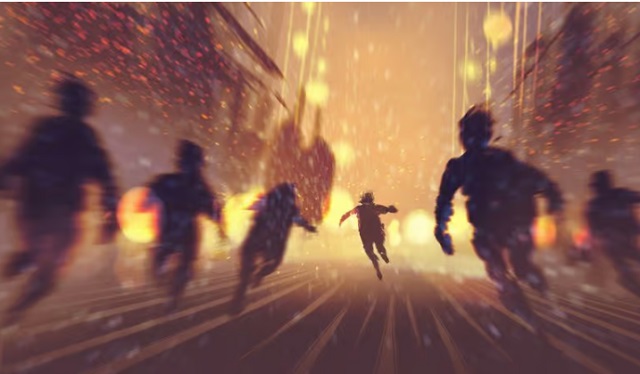
From the Brownstone Institute
By
They’re never going to stop.
We’re a few months away from the end of 2024, four and a half years after the start of the Covid-19 pandemic. It’s a truth that should clearly be universally acknowledged by now, that the pandemic policies enacted by global governments were a catastrophic failure.
Mask mandates were pointless, harmful, and completely ineffective. School closures were one of history’s biggest mistakes, causing learning loss among young people that will set them back an entire generation. Business shutdowns achieved little except for hurting small business owners at the expense of massive corporations and necessitating a rolling series of money printing leading to rampant inflation.
Then we witnessed the formerly unimaginable emergence of vaccine passports.
Regardless, those policies have generally, and thankfully, come to an end. Overwhelming evidence, data, and scientific studies have confirmed that the Anthony Fauci-CDC doctrine was based on nothing, and accomplished less. But among the fearless media columnist set, there’s a desperation to return to the glory days of pandemic restrictions. The latest example coming from an opinion article published over at The Hill, complete with the usual misinformation, poor reasoning, and willful ignorance of current realities.
Continuing the trend that Fauci started.
 Dr. Anthony Fauci, Director of the National Institute of Allergy and Infectious Diseases and the Chief Medical Advisor to the President, and Centers for Disease Control and Prevention Director Rochelle Walensky on December 27, 2021 in Washington, DC. (Photo by Anna Moneymaker/Getty Images)
Dr. Anthony Fauci, Director of the National Institute of Allergy and Infectious Diseases and the Chief Medical Advisor to the President, and Centers for Disease Control and Prevention Director Rochelle Walensky on December 27, 2021 in Washington, DC. (Photo by Anna Moneymaker/Getty Images)
Media Personalities Can’t Let Go of Bad Covid Policies
The column by Aron Solomon presents several absurd arguments, blaming a “recent surge” on “new variants” and saying we “need to take stock of where we are” with the virus.
“The recent surge in COVID-19 cases has disrupted summer travel plans, overwhelmed healthcare facilities in certain areas, and left many Americans dealing with the familiar symptoms of fever, cough and fatigue,” Solomon writes. “The summer months, typically associated with lower respiratory virus activity, have instead seen a significant uptick in COVID-19 infections.”
This is factually inaccurate.
The summer months have traditionally been associated with higher respiratory virus activity in certain parts of the country. The South and Southwest have consistently seen higher Covid spread in the summer months, corresponding with past flu patterns. Even the extremist public health agencies such as the one that dictated their edicts to the city of Los Angeles have acknowledged that summer surges have happened every year since 2020.
Sure enough, that’s exactly what the data shows, summer increases in Covid spread, decreasing over time as population immunity grows and testing decreases.

But Solomon’s run of misinformation wasn’t done there.
He then blames the “relaxation of public health measures” for the increased Covid spread this year.
“Second, the widespread relaxation of public health measures has created an environment conducive to transmission,” he writes. “Mask mandates, social distancing guidelines and restrictions on large gatherings have all but disappeared. This return to normalcy, while massively psychologically and economically beneficial, has provided the virus with ample opportunities to spread.”
The pointless mask mandates disappeared years ago in many parts of the country, which is just as well as they conclusively did not matter. Comparing regions with and without mandates has consistently shown that areas with mandates have the same Covid rates, if not worse. Even in California.

It just doesn’t matter, because masks don’t work.
Solomon then advocates for the return of pandemic restrictions and a “commitment to public health” to combat the summer 2024 surge.
“While much progress has been made in terms of vaccination and treatment, the current surge is a stark reminder that complacency is not an option. The road ahead will require a renewed commitment to public health, both from government leaders and from individuals.
We all need to prepare for not only the possibility of continued disruptions but for another new normal that might be a little closer to 2020 than how we’ve recently been living. That means preparing for future waves and the long-term implications of a world in which COVID-19 remains a persistent, if manageable, threat.”
Beyond the absurdity of demanding restrictions that have already failed, Solomon is ignoring that there was effectively no “surge” in summer 2020, in any meaningful metric. Getting sick, unfortunately, is a part of life. People will have colds, flus, Covid, and their resulting symptoms forever. No matter what we do.
But what matters is whether these waves lead to a substantial increase in associated deaths. They conclusively have not. Per the CDC’s Covid Data Tracker, Covid-associated mortality is essentially near all-time pandemic lows.

Roughly 1.8 percent of all registered deaths across the country were even tangentially associated with Covid. Those massive peaks though? Those came with the strictest restrictions of the pandemic, the restrictions Solomon wants to return.
Even the massive increase in 2021-2022 came after vaccines and boosters were widely available.
But a combination of immunity across a wide swath of the population effectively ended the pandemic. It had nothing to do with any pandemic policies from governments here or abroad. The fact that this is even remotely up for debate is a testament to the power of media misinformation and a willingness from people like Solomon to ignore contradictory information.
There is no emergency, there is no need to reinstate restrictions of any kind to deal with Covid. Especially because those restrictions are useless anyway.
Republished from the author’s Substack
COVID-19
Maxime Bernier slams Freedom Convoy leaders’ guilty verdict, calls Canada’s justice system ‘corrupt’
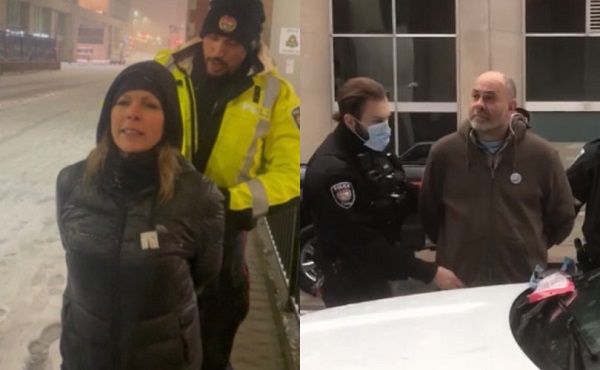
From LifeSiteNews
The leader of the People’s Party of Canada says Tamara Lich and Chris Barber were victims of a ‘political witch hunt.’
The leader of the People’s Party of Canada (PPC) ripped Thursday’s federal court ruling that found Freedom Convoy leaders Tamara Lich and Chris Barber guilty of mischief, saying the court siding with the government amounted to a “political witch hunt.”
“It is disheartening to learn that two of the heroes of the Freedom Convoy, @LichTamara and @ChrisBarber1975, have been found guilty of mischief in the longest and one of the costliest trials in Canadian history,” Maxime Bernier wrote Thursday on X.
“This clearly was a political witch hunt.”
Bernier added that in his view the reality is that Canada’s justice system is “corrupt.”
“Trudeau and his ministers who illegally invoked the Emergencies Act and violated basic rights will go unpunished,” he noted.
“Our justice system is corrupt to the bones.”
On Thursday, Justice Heather Perkins-McVey, the federal judge overseeing the mischief trial, delivered her verdict, finding both Lich and Barber guilty of mischief.
Perkins-McVey seemed to agree with the Crown’s case that Lich and Barber’s influence on the Freedom Convoy constituted public mischief but did dismiss the Crown’s Carter Application accusing Lich and Barber of conspiracy outright.
Lich and Barber both faced six charges each, those being charges of mischief, obstruction, intimidation, and counseling others to commit mischief and intimidation. After the court reconvened Thursday afternoon, Lich was acquitted of four of her six charges, with the fifth charge, counseling to commit mischief, being stayed by the judge.
As for Barber, the court found him guilty of mischief as a principal offender and as an aider and abettor. It also found him guilty on the charge of violating a court order.
As for sentencing, the court will reconvene on April 16 at 1:30 p.m. EST, at which time it will say when a date and time for sentencing will be held.
Lich and Barber both face a possible 10-year prison sentence. LifeSiteNews has reported extensively on their trial.
The Lich and Barber trial concluded in September 2024, more than a year after it began. It was only originally scheduled to last 16 days.
Lich and Barber were arrested on February 17, 2022, in Ottawa for their roles in leading the popular Freedom Convoy protest against COVID mandates. During COVID, Canadians were subjected to vaccine mandates, mask mandates, extensive lockdowns and even the closure of churches.
Despite the peaceful nature of the protest, Prime Minister Justin Trudeau and his Liberal government invoked the Emergencies Act to clear out protesters, an action a federal judge has since said was “not justified.” During the clear-out, an elderly lady was trampled by a police horse and many who donated to the cause had their bank accounts frozen.
COVID-19
Trump’s new NIH head fires top Fauci allies and COVID shot promoters, including Fauci’s wife
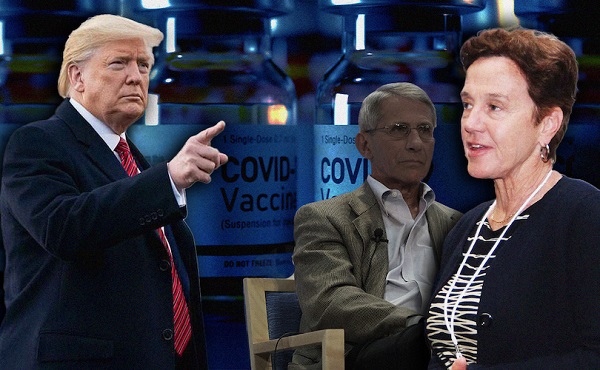
From LifeSiteNews
“During the pandemic Fauci’s bioethicist wife, Christine Grady, offered nurses a choice: Get vaccinated, or lose your job,” noted The COVID-19 History Project on X. “Yesterday, she was offered a choice: Transfer to an office in Alaska, or lose your job. What’s fair is fair. Everyone deserves a choice,” explained the COVID watchdog account.
On day one of his new job as head of the National Institutes of Health (NIH), Dr. Jay Bhattacharya removed four powerful agency heads, including Dr. Anthony Fauci’s wife, Christine Grady, and others associated with the questionable handling of the COVID-19 shots.
Grady, who had served as chief of the agency’s Department of Bioethics, and other longtime Fauci allies in top posts at the NIH involved in the development and distribution of the untested COVID shots produced by Big Pharma were offered jobs in Alaska and other remote locales far away from the NIH’s sprawling Bethesda, Maryland, complex just outside Washington, D.C.
The purge came amid massive layoffs in health-related agencies under the umbrella of Health and Human Services (HHS), now headed by the Make America Healthy Again (MAHA) movement’s founder, Robert F. Kennedy Jr., who has long questioned vaccine safety and American medicine’s focus on treating disease rather than preventing it.
A total of about 20,000 personnel – mostly bureaucrats – or about 25 percent of the HHS workforce have been or will be handed pink slips amid Kennedy’s realignment of the agency.
MAHA critics were quick to call Tuesday’s axing of Fauci confederates as “one of the darkest days in modern scientific history” fueled by Kennedy’s desire to exact revenge on Fauci’s former trusted associates who represent the antithesis of the MAHA movement.
However, the revamping of the federal government’s side of the health industry is no more harsh than the treatment meted out by those formerly in control who, at best, suppressed, and worst, punished those who questioned their iron grip on health-industry regulations and standards.
For years, Kennedy’s critics have dismissed his quest to revamp healthcare and his questioning of the efficacy of the COVID-19 mRNA jabs as anti-science, labeling him as an “anti-vaxxer” in order to suppress his messaging.
Dr. Francis Collins – whom Bhattacharya replaced as head of NIH – in an October 2020 email to Fauci condemned Bhattacharya as a “fringe epidemiologist” because he had co-authored the Great Barrington Declaration, which criticized harmful COVID lockdown policies.
“During the pandemic Fauci’s bioethicist wife, Christine Grady, offered nurses a choice: Get vaccinated, or lose your job,” noted The COVID-19 History Project on X.
“Yesterday, she was offered a choice: Transfer to an office in Alaska, or lose your job. What’s fair is fair. Everyone deserves a choice,” explained the COVID watchdog account.
“We spend 4X more than Italy on healthcare — and live 7 years less. Dead last in cancer rates. This isn’t science — it’s a system profiting off sick kids,” explained Calley Means, RFK Jr. HHS advisor during an interview with Laura Ingraham following the NIH firings.
“Firing the people who oversaw this? That’s step one,” declared Means.
Other NIH officials who were offered reassignments were Dr. Jeanne Marrazzo, who succeeded Fauci as head of the National Institute of Allergy and Infectious Diseases (NIAID), Dr. Clifford Lane, a close Fauci ally who served as deputy director for clinical research at NIAID, and Dr. Emily Erbelding, NIAID’s microbiology and infectious diseases director.
-

 2025 Federal Election2 days ago
2025 Federal Election2 days agoCanada Continues to Miss LNG Opportunities: Why the World Needs Our LNG – and We’re Not Ready
-

 International18 hours ago
International18 hours agoGermany launches first permanent foreign troop deployment since WW2
-

 2025 Federal Election1 day ago
2025 Federal Election1 day agoMainstream Media Election Coverage: If the Election Was a NHL Game, the Ice Would be Constantly Tilted Up and to the Left
-

 2025 Federal Election21 hours ago
2025 Federal Election21 hours agoPoilievre To Create ‘Canada First’ National Energy Corridor
-

 COVID-1917 hours ago
COVID-1917 hours agoMaxime Bernier slams Freedom Convoy leaders’ guilty verdict, calls Canada’s justice system ‘corrupt’
-

 International1 day ago
International1 day agoFREE MARINE LE PEN!’: Trump defends French populist against ‘lawfare’ charges
-

 Health2 days ago
Health2 days agoSelective reporting on measles outbreaks is a globalist smear campaign against Trump administration.
-
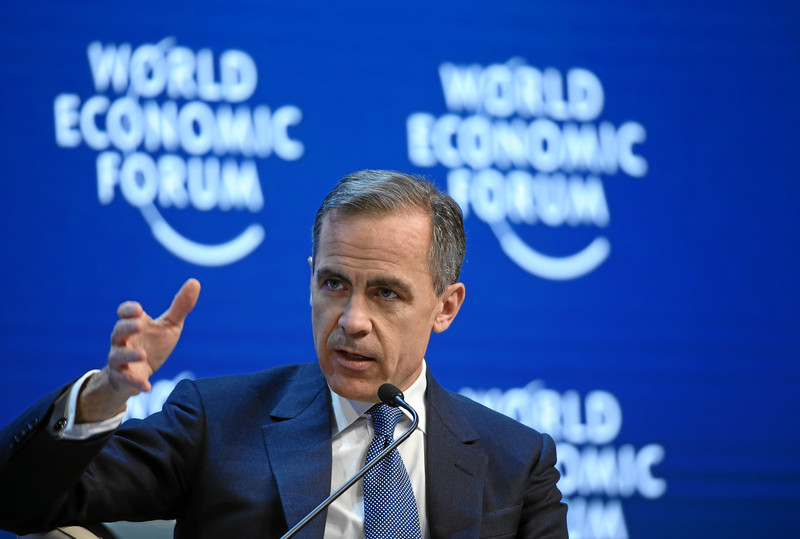
 2025 Federal Election2 days ago
2025 Federal Election2 days agoMark Carney is trying to market globalism as a ‘Canadian value.’ Will it work?






